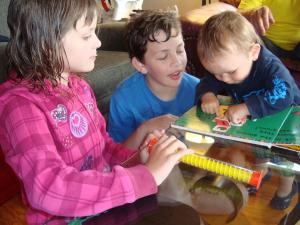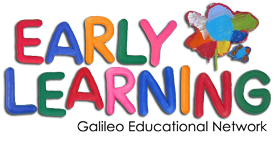
From babyhood, environment, biology and experience set the stage for language development. One of the strongest predictors of early reading success lies in the use of oral language.
In this video, students use digital cameras to capture their surroundings and create their own alphabet book. The video was then placed in their school library, where students viewed it over and over again.
Telling Stories
From relating the day’s activities, to recalling stories they’ve been told, young children can be accomplished storytellers. Familiar activities are favourite subjects for young children. By retelling and listening to stories, young children develop emergent literacy skills. As they get older, they generally participate more in storytelling activities, and these stories gradually become more complex. Essentially, storytelling is a powerful way to organize a child’s experiences.
This Video is an example.
Studies of Babies and Language
They prefer words to other sounds.
Infants around four months old are generally able to tell the difference between languages (Columbo and Bundy, 1983). Around this age, most babies learn to pay attention to speech rhythms and intonations – information that gives meaning to language. By eight to ten months of age, babies generally stop perceiving language as a collection of mere sounds. They become more responsive to the language spoken by others around them. Babies are especially attracted to faces, and often look at the lips of whoever is speaking.
They actively attempt to understand the meaning of the language that is spoken around them, by paying attention to their surroundings and context.
Many parents of children around a year old believe much of what they say is understood. Much of this understanding, however, is rooted in context. For example, one study (Lewis and Freedle, 1973) analyzed the comprehension abilities of 13 month-old babies. When handed an apple in her high chair, the child was told to eat the apple, which she did. When placed in a playpen, she was handed another apple, and was told to throw it, which she did. But when placed in the high chair again and given another apple, this time with the instructions to throw it, she bit into it instead. The same thing happened when the child was placed in her playpen with another apple. She bit into it when asked to throw it. This was a consistent pattern found with other children participating in the study.
This study also illustrates the many opportunities available to young children when learning language – it occurs in day-to-day settings. A child’s environment is vitally important when learning language and speech. Experiencing, or being exposed to language is obviously important, but so is the opportunity to use these skills. Learning in this realm has to be active and ongoing, through conversations, activities and encouragement, as opposed to something that is solely observed.
Downloads
Create a learning environment that supports language and literacy development.
How can you create an ideal environment for learning another language? Also, find out why maintaining proficiency in the home language is key to a young child’s success in school.
Many children’s books address mathematical ideas in fun and interesting ways. Simply reading them, however, won’t instill deep mathematical understanding. But when kids can model the stories and are encouraged to find ways to generalize the mathematical ideas the stories contain, books can provide great opportunities for deepening mathematical understanding.

